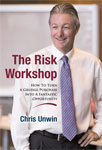CHRISISMS
A fortnightly pearl of wisdom to fast track your success
Chrisism #98 - Closing Techniques (Part Two)
27 August 2019
In my last ‘Chrisism’, I outlined some basic principles that apply when overcoming resistance on the part of prospects/clients and covered off in detail on two of the most commonly used closing techniques, namely the Alternative Close and the Triplicate Close. As promised, in this ‘Chrisism’ I will be sharing with you some more closing techniques which will hopefully help to minimise the amount of times that you let business slip through the cracks that is there for the taking.
The first closing technique I want to share with you this time around is known as The Subordinate Question, and it involves skirting an issue of contention such as “I don’t believe in saving money/have the spare dollars/see the benefits”, and diverting the focus to another area e.g. “Suppose you did believe in saving money/have the spare dollars/see the benefits – I know you don’t, but suppose you did…….When do you think would be the best time to start?/Where would you like the money invested?/How do you think you would use the money down the track?” This technique is designed to divert the attention of your client away from the negative aspects of what you are recommending and redirect it towards the more positive aspects of what you are recommending. Secondly, let’s look at the Feel, Felt, Found close. This technique requires you to avoid asking people what they think about something and instead asking them how they feel about something. This will also give you the opportunity of bringing your other clients to the table, thereby creating the powerful lever of peer group pressure. For example:- “I know exactly how you feel – indeed it is exactly how most of my clients felt immediately prior to getting something going, but what they found was…..” And here you need to stress the benefits and positive results that they will experience as a result of implementing the recommended action. Thirdly, and probably the most commonly used closing technique is the Assumptive Close. Using words like obviously, clearly or presumably in a matter of fact way makes it easier for your client to make their decision or give their answer e.g. “Obviously you wouldn’t be averse to securing your lifestyle?” or “Presumably you would be open-minded to any ideas designed to improve your lifestyle?” In another context and when you are creating expectations at the beginning of the first client meeting, the more assumptive you are that the person sitting in front of you is going to become a client, the easier it will be for them to come on board. When outlining what they can expect as a client, make sure you say “when you become a client……” rather than “if you become a client……” or “assuming you become a client……”. In the first instance, the person’s subconscious says “you are going to become a client”, in the second instance it says “you may not become a client”, and in the third instance it says “you still may not become a client” – and never underestimate the power of the subconscious. Lastly, there is the Silent Close. Do not underestimate the power of silence. There is nothing wrong with silence as long as you control it – who is the one feeling the pressure? Never answer your own questions. Remember – use your ears and your mouth in the same proportion that they were given to you! Good sales people are good listeners, not talkers. |





